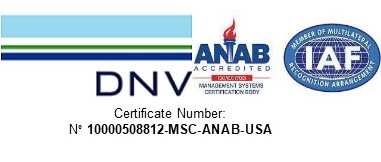Members,
The U.S. Army Corps of Engineers (USACE) contracted Weeks Marine to build the saltwater sill at Mile 63.8 Above Head of Passes (AHP) with the cutterhead dredge J.S. CHATRY. The sill is a barrier to the migration upriver of the saltwater wedge to protect freshwater intakes at approximately Mile 74 AHP. Weeks completed the barrier’s construction to the targeted elevation – 55 feet through dredging operations from July 11 to July 27 (2023). The U.S. Coast Guard (USCG) removed all transit restrictions related to the sill’s construction on July 27. The USACE will continue to monitor the location of the saltwater wedge although the long-range river forecasts indicate the Carrollton Gage will remain over 2.0 feet for the next month. The USACE last measured the saltwater wedge at Mile 57.2 AHP on August 15 (2023). No further actions are anticipated but remain possible, especially with drought conditions being forecast.
This is the first time the sill’s construction has been required in back-to-back years as it was constructed during last year’s low water event also by Weeks Marine (October 2022). The hydrology of the Mississippi River is ever changing as 2019 was the first time the Bonnet Carré Spillway had been operated in back-to-back years (2018/2019) and twice in the same year and briefly in 2020 (three years in a row).
The stage at Cairo (IL) at 1100 hours today was 12.92 feet with a 24-hour change of – 1.48 feet. The following graph details the stage readings at Cairo, IL over the last two months (June 30 to August 31).The National Weather Service’s (NWS) Extended Streamflow Prediction forecast the stages at Cairo will continue to fall to 7.3 feet on September 28 (2023).
Earlier this year the NWS confirmed the country is being influenced by the prevailing El Nino weather pattern, that can be linked at times to higher precipitation levels “precipitation increases significantly”. Although the location of precipitation is also a critical factor in increasing stages on the Mississippi River.
During 2019 and 2020 there was a lot of media attention focused on increased precipitation leading to more high river stages with multiple records being set such as the increased operation of the Bonnet Carré Spillway. The Spillway was operated in back-to-back years 2018/2019 for the first time ever and repeated in 2019/2020 and then the first and only time (so far) the flood control structure was operated twice in the same year 2019. One of the caveats related to the increased precipitation forecasts was that more extreme weather events would also increase – thus extreme droughts or increased low water events were included in the same weather briefings. However, there has not been a crest recorded on the Carrollton Gage above 14.5 feet since 2020 prior to the last opening of the Bonnet Carré Spillway with a crest of 17.61 feet recorded on April 16, 2020, eclipsing the crest from 2019 at 17.25 feet on May 10, 2019.
The attachment is provided by the USACE St. Louis District to detail channel conditions – the St. Louis District as the Navigation Channel Condition Status Report as updated on August 30, 2023. This report provides a list of the activities related to low river levels with closures and channel or channel infrastructure maintenance projects and documents areas of shoaling to include river stage data and dredge assignments relevant to the date of the report. The USACE previously moved the government dustpan dredges (HURLEY and JADWIN) from the Crossings Above New Orleans (deep-draft channel) to address shoaling upriver on the shallow-draft channel.
The graphs below are reproduced from NOAA’s National Weather Service website and detail the latest forecasts for Cairo (IL) and New Orleans (LA) the forecasts represent an experimental product to account for the complexity of accurately predicting long-range precipitation. These forecast projects stage levels based on expected precipitation for 2 days (top) and 16 days (bottom) and was developed within the North American Ensemble Forecast System (NAEFS) computer model and highlights Quantitative Precipitation Forecasts (QPF). Along with the forecasts, a shaded area is also provided to indicate uncertainty for the forecast each day in the future. These plots are experimental and not an official forecast product.
CAIRO QPF FORECAST:
NEW ORLEANS QPF FORECAST:
The 24-hour, 48-hour and 72-hour predictive precipitation charts below are reproduced from the National Weather Service and demonstrate the concern of drought conditions returning for the central Mississippi River Basin.
24-HOUR QPF FORECAST:
48-HOUR QPF FORECAST:
72-HOUR QPF FORECAST:
MISSISSIPPI RIVER CARROLLTON GAGE STAGE UPDATES:
The Carrollton Gage (New Orleans) reading at 1100 hours today was 3.79 feet the 24-hour change of – 0.48 feet.
The National Oceanic and Atmospheric Administration’s (NOAA) National Weather Service Extended Streamflow Prediction (28-Day) for the Carrollton Gage issued today forecasts stages will continue a slow fall to 2.0 feet on September 28 (2023).
Please remember the long-range river stage forecasts only account for precipitation expected to fall in the next 48-hours.
The lowest reading on the Carrollton Gage in 2023 to date was 1.47 feet on July 5 and the lowest reading in 2022 was 1.38 feet recorded on two different dates in October.
The Mississippi River Discharge at Red River Landing (Mile 302.4 AHP) recorded today was recorded at 242,000 cubic feet per second. The lowest recorded discharge at Red River Landing this year was 214,000 cfs on July 3. During the low water event of 2022 the lowest discharge was measured at 121,000 cfs recorded on October 25, 2022.
With You,
Sean
Sean M. Duffy, Sr.
Executive Director
Standing By Channel: (504) 338-3165
Big River Coalition




